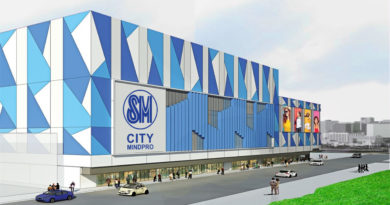Keeping Your Data Centers Cool from Extreme Heatwave in the Philippines
Last March, the Philippine Atmospheric, Geophysical and Astronomical Services Administration (Pagasa) issued an El Niño Watch, warning the public about the possible repercussions of the dry season in the Philippines. Notifying the start of the summer season, Pagasa warns that heatwaves can worsen, especially with the changing weather conditions because of climate change. Last April 10, Pagasa computed the highest heat index in San Jose, Occidental Mindoro, and Butuan City, Agusan del Norte, which went up to 47 degrees Celsius.
El Niño is a cyclical climate phenomenon that occurs in the Pacific Ocean and can significantly impact weather patterns. In the Philippines, El Niño is often associated with prolonged periods of drought and high temperatures, which can pose significant challenges for data center operators.
“Dealing with the extreme spike of temperatures should not be taken lightly. This is when data center operators must be vigilant in monitoring their facilities. If not taken seriously, providers risk losing their reliability and connectivity,” said Pamela Albar, Associate Director for Channels & Enterprise Sales, Vertiv Philippines.
For data center operators to keep their cool, here’s how they can protect their operations from extreme temperature spikes during summer.
Run as many cooling units as possible. It’s better to double or triple the operation of your cooling units to keep the refrigerant pressures as low as possible so operators can prevent trips on high pressure. By running the cooling units simultaneously, they can minimize the load on each data hall.
If cooling systems are not running at their total capacity, it can result in equipment overheating and potentially cause costly downtime. Cooling units are designed to remove heat from the data center environment. If they are not functioning correctly, the equipment can suffer from thermal stress, leading to premature failure or reduced performance.
Regular maintenance is a must. With the increased temperature, data center cooling units must double their usual work. This means the units must undergo frequent checking and maintenance, especially the condenser coils.
Condenser coils are responsible for releasing heat absorbed by the refrigerant in the evaporator coil. When it is blocked with dirt and dust or covered with rust, it reduces its heat-transfer capability and becomes ineffective when the ambient temperature climbs. Dirty coils can also cause a system shutdown due to uncontrolled high pressure. This endangers not only the facility but also the operations during a critical time.
Invest in high-quality cooling systems. It is expected for data centers to experience unpredictable temperature changes, which is why the facility needs to have the best cooling system. Operators must invest in high-quality equipment to increase its lifespan, maintain a stable temperature environment, and reduce the risk of thermal stress.
It also enhances the facility’s performance, ensuring the data center’s reliability. Consequently, investing in high-quality cooling systems is more cost-efficient because they are energy-efficient, lowering operating costs.
Some types of cooling systems that data center facilities can invest in are immersion, water-free, and evaporative-free cooling systems designed to deliver reliability and efficiency in high-temperature environments.
As architects of continuity, these solutions are offered by Vertiv, making them a reliable helper in upgrading thermal systems and creating a maintenance plan to keep the facility cool, particularly during the El Niño phenomenon. The company also provides cutting-edge, sustainable, and innovative solutions that improve the performance and scalability of data centers, communication networks, and other critical IT facilities.
To learn more about how Vertiv supports the continuity of today’s vital business, visit Vertiv.com.



